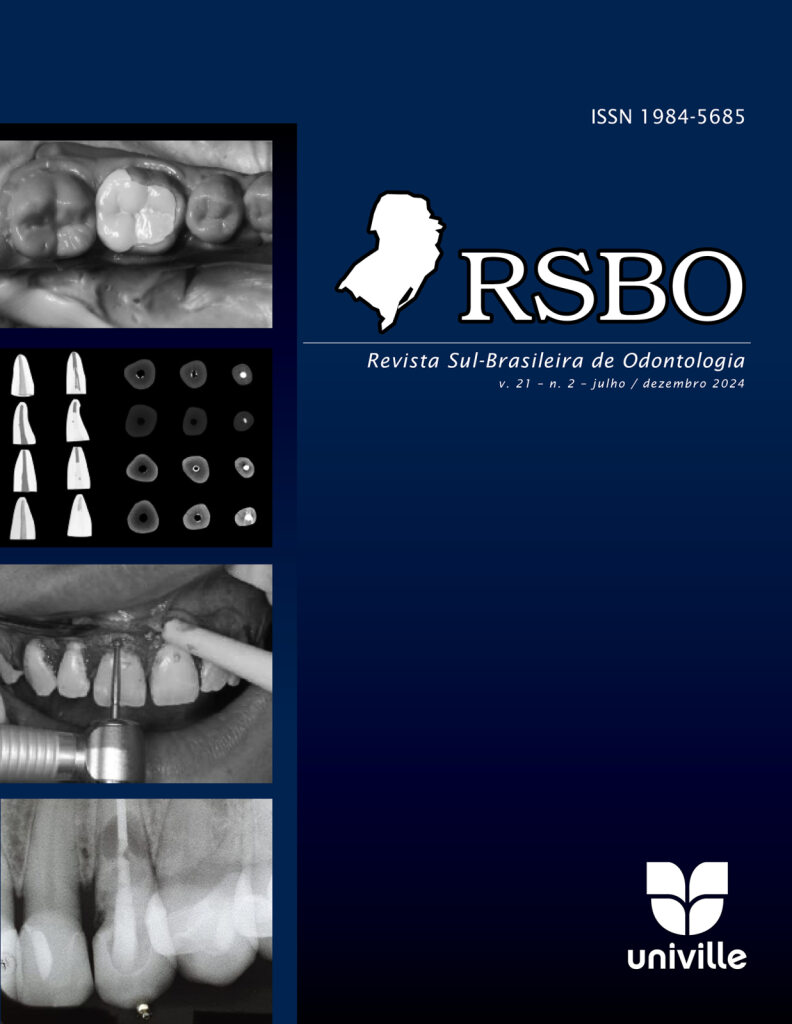Semi-direct restorative technique for aesthetic and functional restoration in posterior teeth: case report
DOI:
https://doi.org/10.21726/rsbo.v21i2.2543Palavras-chave:
composite resins; permanent dental restoration; semi-direct restorative technique.Resumo
The semi-direct restorative technique using composite resin has gained increased popularity in clinical practice due to several advantages: reduced cost for patients, the feasibility of composite resin restorations in teeth with significant structural loss, time[1]saving, improved margin adaptation, polishing, polymerization, and aesthetics of the restoration performed outside the mouth. Objective: The aim of this study was to present a clinical case involving the restoration of posterior teeth with substantial coronal destruction using the semi-direct technique. Case report: The tooth was prepared (defective restoration removal) following onlay preparation guidelines. The preparation was then molded using alginate, and the model was obtained in elastomeric material (addition-polymerized silicone). A composite resin restoration was crafted on the model, photoactivated, and polished outside the mouth. Following the resin restoration on the silicone model, it was cemented onto the prepared tooth. Absolute isolation was employed, the temporary restoration was removed, and the preparation was cleaned. For cementation, sandblasting with aluminum oxide in the internal portion, etching with phosphoric acid, and the application of an adhesive system were performed. Subsequently, a dual polymerization resin cement was manipulated, applied to the resin piece, and placed on the prepared tooth. Excess cement was removed, and the piece was photoactivated for 40 seconds on each surface. Finally, the piece’s adaptation was verified, occlusal contacts were checked, and finishing and polishing were carried out. Conclusion: It can be concluded that the semi-direct composite resin restoration enabled achieving improved anatomy, marginal adaptation, polishing, and resistance, consequently enhancing clinical longevity with a better cost-benefit ratio for the patient.

